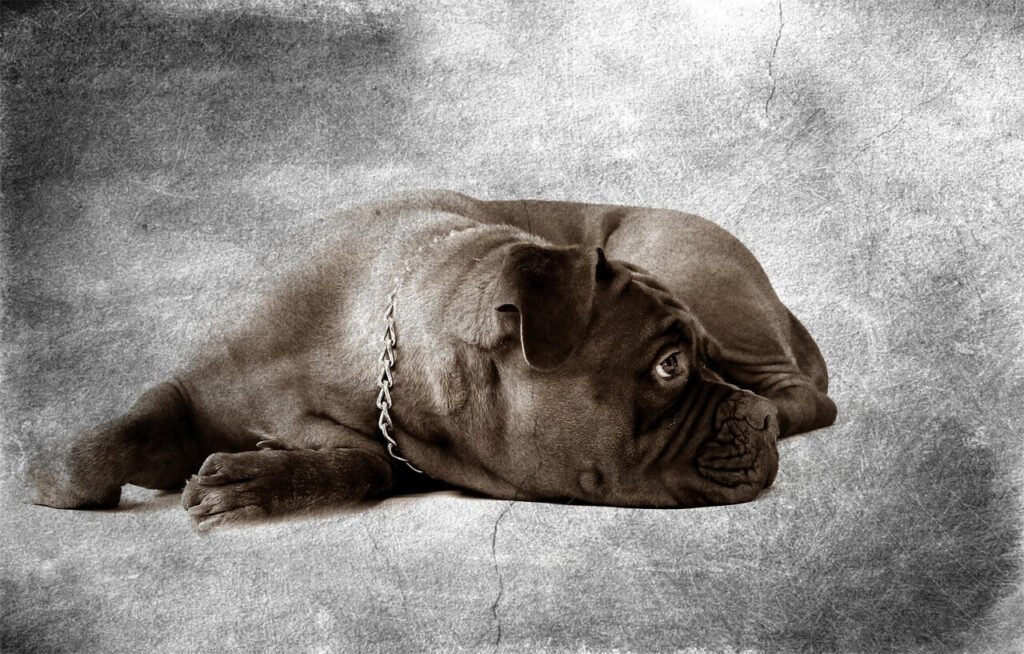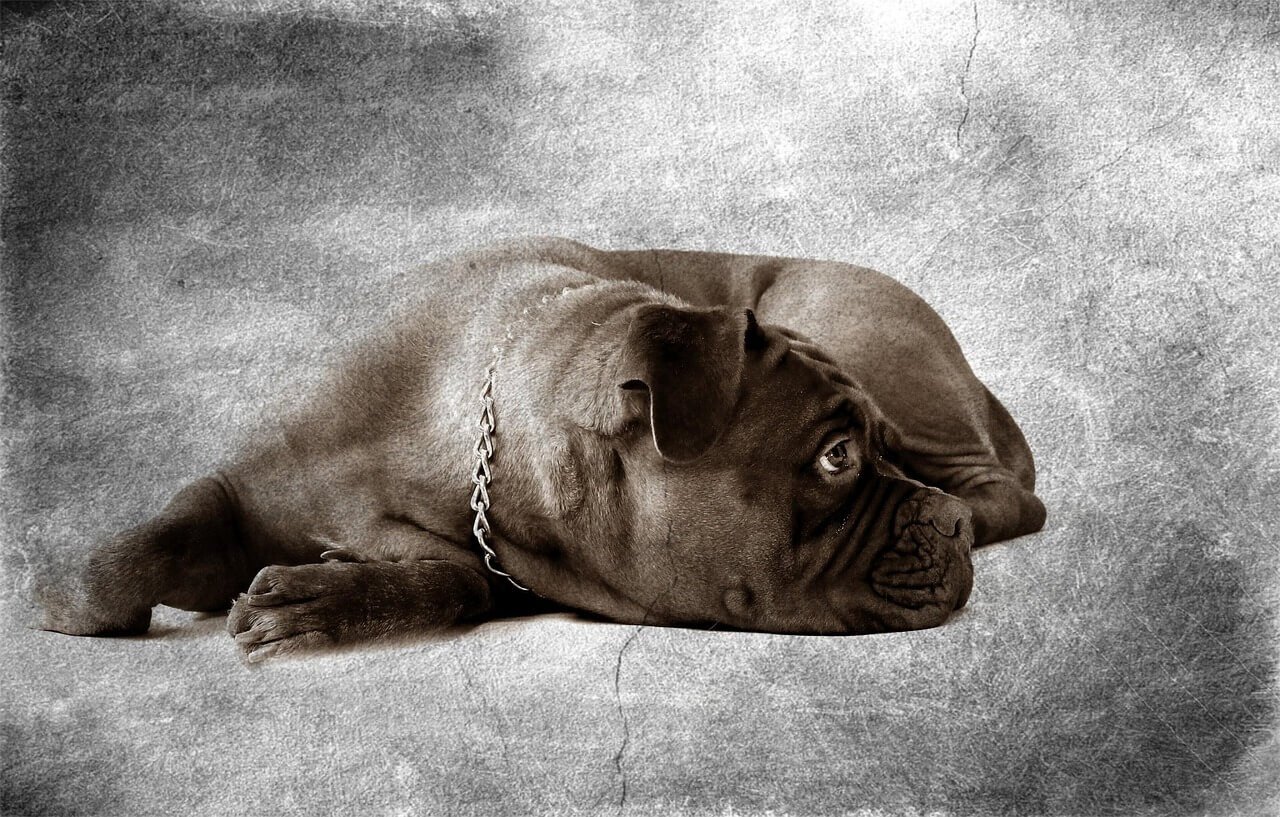Why Does My Dog Curl Up in a Ball? Understanding This Adorable Behavior
Have you ever noticed your furry friend curling up into a tight ball while sleeping or resting? It’s an endearing sight, but have you ever wondered why they do it? Dogs are fascinating creatures, and their behaviors often carry deeper meanings rooted in instinct, comfort, and even health. Whether your dog is a tiny Chihuahua or a large Golden Retriever, this curled-up position is common across breeds and sizes. In this blog post, we’ll explore the reasons behind this behavior, how it benefits your pup, and what it might tell you about their well-being. So, let’s dive into the world of canine body language and uncover the secrets behind this adorable habit.
The Instinctual Roots of Curling Up
Dogs are descendants of wild canines, and many of their behaviors stem from survival instincts honed over thousands of years. The act of curling up in a ball is no exception. Here’s a closer look at the instinctual reasons behind this behavior:
Protection from the Elements
Wild dogs and wolves often curled up to conserve body heat during cold nights. By tucking their paws and tail close to their bodies, they minimized heat loss and stayed warm.Guarding Vital Organs
In the wild, predators posed a constant threat. Curling up helped protect a dog’s vulnerable belly and vital organs from potential attacks.Compact Sleeping Space
In dens or confined spaces, curling up allowed wild canines to fit comfortably in small areas, making it easier to rest without feeling exposed.Mimicking Prenatal Behavior
Puppies in the womb naturally curl up due to limited space. This position may feel familiar and comforting even after birth.Energy Conservation
Curling up reduces the surface area of the body exposed to the environment, helping dogs conserve energy during rest.
These instinctual behaviors highlight how deeply ingrained this posture is in a dog’s DNA. Even though our pets live in safe, cozy homes today, these ancient habits persist as a testament to their wild ancestry.
Physical Comfort and Health Benefits
Beyond instinct, curling up also serves practical purposes related to physical comfort and health. Let’s explore how this position benefits your dog:
Temperature Regulation
Curling up helps dogs maintain a stable body temperature. During colder months, it minimizes heat loss, while in warmer weather, it prevents overheating by reducing exposed skin.Joint Support
For older dogs or those with joint issues like arthritis, curling up can relieve pressure on sore limbs and provide a more comfortable resting position.Digestive Aid
Some experts believe that curling up may help dogs digest food more easily by compressing their abdominal area gently.Muscle Relaxation
The position allows muscles to relax fully, promoting better rest and recovery after physical activity.Sense of Security
Curling up creates a cocoon-like effect, which can make dogs feel safer and more secure in unfamiliar environments.
This simple yet effective posture not only supports your dog’s physical well-being but also contributes to their overall sense of comfort and relaxation.
Check this guide 👉Why Is My Dog Twitching? Best 7 Health Tips!
Check this guide 👉Why Does Your Dog Walk in Circles? Best 7 Behavior Tips!
Check this guide 👉Why Is My Dog Snoring While Awake? Best 7 Behavior Tips!

Reasons for Curling Up | Benefits for Your Dog |
|---|---|
Protection from predators | Enhances feelings of safety |
Temperature regulation | Keeps them warm or cool depending on need |
Joint pain relief | Reduces discomfort during rest |
Energy conservation | Helps them rest more efficiently |
Mimicking prenatal behavior | Provides emotional comfort |
Emotional and Psychological Factors
While physical and instinctual reasons play a significant role, emotional factors can also influence why your dog curls up. Below are some psychological aspects to consider:
Stress Relief
When feeling anxious or overwhelmed, curling up can provide a calming effect, much like humans hugging themselves for comfort.Attachment to Owners
Dogs often mimic their owner’s behaviors. If you tend to sleep in a fetal position, your dog might follow suit.Seeking Solitude
Curling up can signal that your dog wants some quiet time away from distractions or stimulation.Feeling Vulnerable
A sick or injured dog may curl up as a way to self-soothe and cope with discomfort.Routine Habit
Over time, dogs develop preferences for certain sleeping positions based on what feels most natural to them.
Understanding these emotional cues can strengthen the bond between you and your pet, allowing you to respond appropriately to their needs.
When to Be Concerned About Curling Up
While curling up is generally harmless, there are instances where it could indicate underlying issues. Keep an eye out for these signs:
Frequent Changes in Sleep Position
If your dog suddenly starts curling up all the time instead of stretching out, it could be a sign of discomfort or pain.Lethargy or Lack of Energy
Combined with excessive curling, lethargy might point to illness or fatigue requiring veterinary attention.Difficulty Getting Comfortable
If your dog seems restless or unable to settle into their usual position, it could indicate joint or muscle problems.Loss of Appetite
A change in sleeping habits accompanied by reduced appetite should raise concerns about your dog’s health.Unusual Whining or Vocalizations
Dogs in pain may vocalize while trying to get comfortable, signaling that something isn’t right.
While occasional curling is normal, persistent changes warrant a visit to the vet to rule out any medical conditions.
Behavioral Triggers
Dogs are highly responsive to their environment, and certain triggers can influence their decision to curl up. Here’s a look at some common behavioral factors:
Loud Noises
Thunderstorms, fireworks, or sudden loud sounds can cause dogs to curl up as a way to shield themselves from perceived threats.New Surroundings
When introduced to unfamiliar places, dogs may curl up to feel more secure and grounded.Routine Changes
Alterations in daily schedules, such as a new work routine or houseguests, can prompt this behavior as a coping mechanism.Owner’s Absence
Separation anxiety might lead your dog to curl up near items that smell like you, seeking comfort in your scent.Overstimulation
After an exciting or overwhelming event, such as a trip to the park or meeting new people, dogs may curl up to decompress.
Understanding these triggers can help you identify stressors and provide reassurance when needed. By addressing the root causes, you can create a calmer environment for your furry companion.
Breed-Specific Tendencies
While all dogs may curl up occasionally, certain breeds exhibit this behavior more frequently due to their physical traits or temperaments. Let’s explore how breed characteristics play a role:
Small Breeds
Smaller dogs, like Dachshunds or Shih Tzus, often curl up because their compact size makes it easier to maintain this position.Short-Nosed Breeds
Brachycephalic breeds, such as Pugs and Bulldogs, may prefer curling up to avoid strain on their respiratory systems.Herding Breeds
Dogs like Border Collies or Australian Shepherds may curl up after intense physical activity to relax their muscles.Cold-Weather Breeds
Breeds like Huskies or Malamutes, adapted to colder climates, may curl up to conserve heat even in moderate temperatures.Companion Breeds
Lap dogs like Cavalier King Charles Spaniels often curl up close to their owners, reflecting their strong bond and desire for proximity.
These tendencies highlight how breed-specific traits influence sleeping positions. Observing your dog’s habits can offer insights into their unique needs and preferences.
Environmental Influences
A dog’s surroundings can significantly impact their choice to curl up. Factors such as bedding, room temperature, and even lighting can play a role. Consider the following environmental influences:
Comfortable Bedding
Soft, supportive beds encourage dogs to curl up, as they feel safe and cozy in their resting space.Room Temperature
In colder rooms, dogs are more likely to curl up to retain body heat, while warmer environments might lead them to stretch out.Lighting Conditions
Dim lighting or darkness can trigger relaxation, prompting dogs to adopt their preferred sleeping position.Noise Levels
Quiet spaces allow dogs to rest peacefully, making them more inclined to curl up without distractions.Proximity to Owners
Dogs often curl up near their owners or in areas where they feel connected, reinforcing their sense of security.
By optimizing your dog’s environment, you can create a space that encourages restful and comfortable sleep. Small adjustments can make a big difference in their overall well-being.
Frequently Asked Questions About Dogs Curling Up
Is it normal for my dog to always curl up when sleeping?
Yes, it’s completely normal. Many dogs prefer this position for comfort and security.
Can curling up indicate pain or discomfort?
Sometimes, especially if it’s a new behavior or accompanied by other symptoms like whining or restlessness.
Do all dog breeds curl up equally?
Most breeds exhibit this behavior, but smaller dogs may curl up more frequently due to their size and flexibility.
Should I encourage my dog to stretch out instead?
Not necessarily. Let your dog choose the position that feels best for them unless a vet advises otherwise.
Does curling up mean my dog feels cold?
It can, but it’s not the only reason. Dogs curl up for various reasons, including instinct and comfort.
Final Thoughts: Embracing Your Dog’s Natural Behaviors
Curling up in a ball is one of the many charming quirks that make our canine companions so lovable. From instinctual roots to modern-day comforts, this behavior reflects both their evolutionary past and present-day needs. As a responsible pet owner, understanding why your dog adopts this posture can deepen your connection and help you ensure their well-being. Remember, every wag, bark, and curl tells a story—so cherish these moments and continue nurturing the special bond you share with your four-legged friend.
Canned Pumpkin for Cat Diarrhea: Best 7 Expert Tips! Natural remedy to firm stools, soothe upset bellies, and support gut health safely.
Can a Cat Give You Scabies? Best 7 Expert Tips! Discover the truth about feline mites, human skin risks, and how to protect yourself—without panic.
Cat Flea vs Human Flea: Best 7 Expert Tips! Discover the truth about bites, species, and how to eliminate infestations for good.
Weird Cat Behaviors: Best 7 Expert Tips! Discover why cats do strange things—and how to understand, not punish, their instincts for a happier home.





